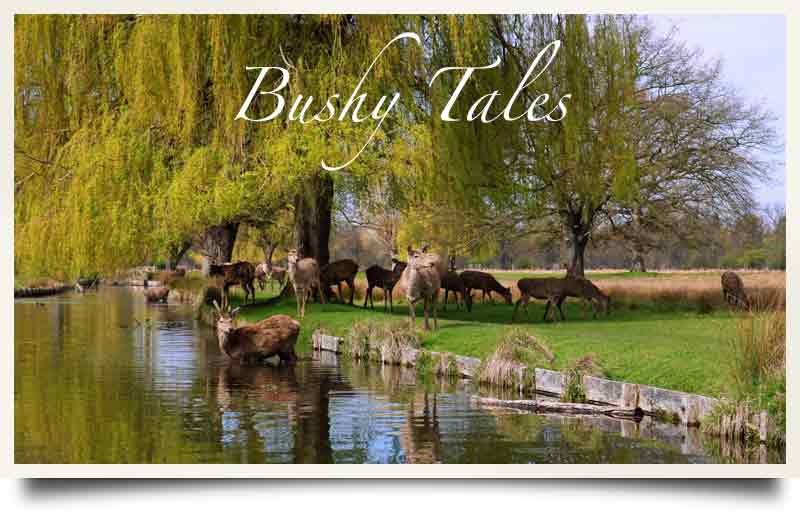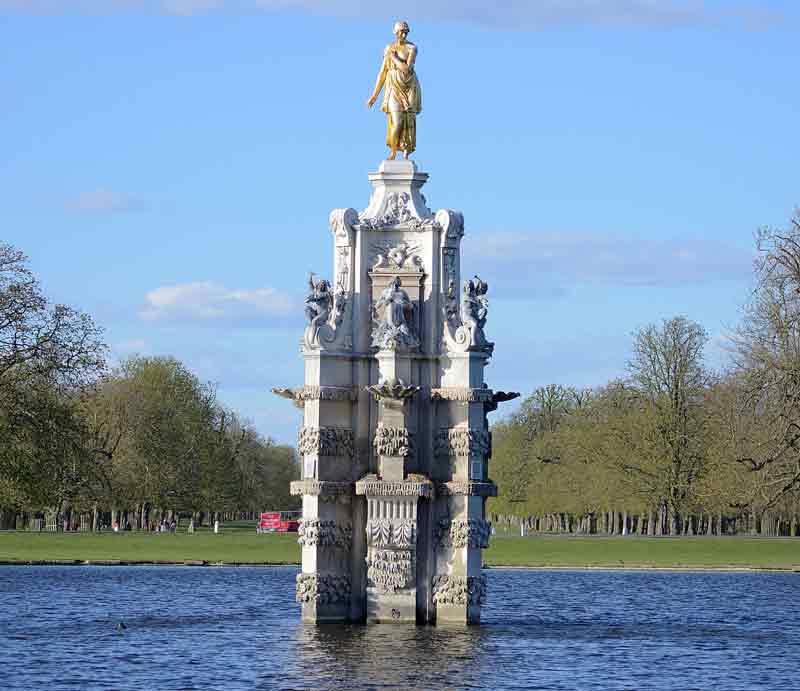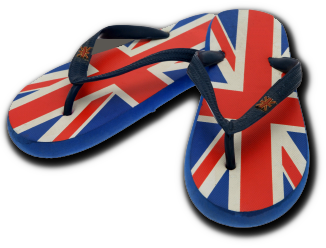The Diana Fountain (located at the centre of Sir Christopher Wren's Chestnut Avenue) was designed at the request of King Charles I for his wife Henrietta Maria. At one time the fountain was situated at Hampton Court but was moveed to Bushy in 1713. It features a bronze statue of the goddess Diana atop a stone and marble built fountain.
Bushy Park London Private Guided Tours

Out of the eight Royal Parks in London, Bushy Park is the second largest at over 1,000 acres. Situated in Richmond upon Thames just north of Henry VIII's Hampton Court Palace, the park is designated a Site of Special Scientific Interest due its rich biodiversity in its woodlands, grasslands and waterways. Features of the park include the recently restored eighteenth century Baroque-style Upper Lodge Water Gardens, which was built for Charles Montague, the 1st Earl of Halifax who was the park ranger. In the gardens there is a Grade II listed brick-built brewhouse. The Longford River flows through the park and there are a number of ponds and lakes. The Pheasantry Cafe serves food and drink.
Part of the park was used as a US air base during the war and the D-Day Landings were planned from Bushy at the Supreme Headquarters of the Allied Expeditionary Force. The park is also home to Teddington Rugby Club and four cricket clubs. The rules of modern day hockey were devisied largely at Bushy.
Royalty
In the sixteenth century the land that makes up the park (along with Hampton Court palace) was given to King Henry VIII by his advisor Cardinal Wolsey. The king used the land for hunting deer. The Longford river (actually a 12 mile stretch of man-made canal) was constructed in the 1630s on the orders of King Charles I to supply Hampton Court with water. The canal now looks like a natural feature of the landscape.

The honourary position of 'ranger' has been held by King William IV and later Queen Adelaide. The position of ranger has long included residency at Bushy House at the Teddington end of the park.
Nature
There is a natural diversity of flora and fauna within the park due to its range of semi-natural habitats including grassland, woodland, scrubland, wood pasture, waterways and ponds. Visitors enjoy watching the herds of fallow and red deer (originally ontroduced by the Romans) that wander freely in the park. There are waterways and ponds which attract wildlife as does the large areas of woodland and scrub. The park is unique among the Royal Parks of London in that it has wide open areas of free roaming wildlife but also ornamental gardens.

Bushy Park is one of the few Royal Parks where hedgehogs can still be seen and a number of species of bat frequent the park too. Visitors can also see voles, rabbits and shrews.
A haven for twitchers - many different species of bird including rare ground nesting birds. You might even spot a kingfisher or two.
The park's ponds and waterways contain a rich stock of varied fish. It's reported a carp weighing 5lb 1oz was caught at Bushy - thought to be a record at the time.
Bushy Park enjoys ancient trees dating back hundreds of years and rare species of invertebrates and insects of special scientific interest as well as butterflies. 150 species of bee and wasp have been catalogued at the park. The ancient woodlands and rotting wood provide an ideal environment for the wide diversity of insects and a fungus gnat - a rare type of fly was discovered by by entomologist Peter Chandler in the park's Waterhouse Woodland Gardens.

 Book Tour
Book Tour


